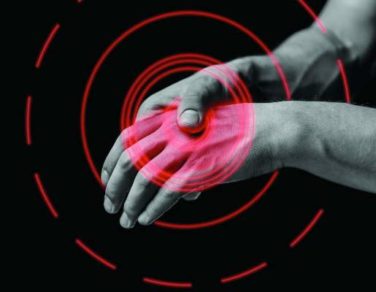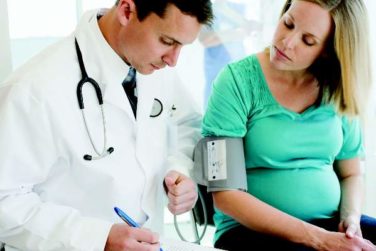AT THE EAST SCIENTIFIC ASSEMBLY
LAKE BUENA VISTA, FLA. (FRONTLINE MEDICAL NEWS) – Use of a multidisciplinary safety checklist prior to all bedside bronchoscopy-guided percutaneous tracheostomies was independently associated with a dramatic reduction in adverse procedural events, a study showed.
After adjustment for age, vitals, tracheostomy risk factors, and ICU duration after the procedure, multivariable logistic regression determined that no other factor – not age, baseline heart rate, baseline oxygen saturation, or difficult airway status – was significant against adverse procedural events except use of the checklist (odds ratio, 5.85; P = .022
Overall, in the postchecklist group, 3.2% experienced adverse events, compared with 14.7% in the prechecklist group.
“We feel this checklist could be used by other institutions with similar success and also could be modified for other invasive bedside procedures,” lead study author Dr. Joshua Hazelton said at the annual scientific assembly of the Eastern Association for the Surgery of Trauma ( EAST ).
Bedside bronchoscopy-guided percutaneous tracheostomies (BBPT) are safe, yet like many bedside procedures are seldom subject to the same safety checklists and timeout processes that have become standard in the operating room, he observed. When asked specifically how the checklist improved safety, Dr. Hazelton said the multidisciplinary aspect of the checklist distills a sense of ownership in every team member. A significant amount of evidence published on the benefits of World Health Organization checklists also shows checklists improve communication and empower members to speak up if something doesn’t feel right.
“Most of all, the checklist helped to focus the team on a procedure that really has very little margin of error,” he said. “As we do more of these procedures, I think the tendency for the entire team can be to look at these procedures as almost routine, and certainly with an airway procedure, I don’t think you should look at it as a routine thing.”
The safety checklist was created by a team of surgeons, critical care nurses, respiratory therapists, and trauma technicians at Cooper University Hospital in Camden, N.J., and focused on preprocedural setup, procedural steps, and a group timeout process.
In the equipment setup phase, the bedside nurse, respiratory therapist, and trauma technician must assemble and test all necessary equipment.
During the timeout process, team members are introduced, the nurse confirms the patient, the planned procedure, positioning of the patient, medications, and equipment, and the surgeon discusses any critical steps or steps that may be unique to the patient. Finally, each team member is given an opportunity to discuss any concerns or ask any questions prior to proceeding.
“The idea of this checklist is to bring the team together, so if there is one member of the team who doesn’t feel right about the procedure or has concerns, the procedure is stopped,” said Dr. Hazelton of the department of surgery at Cooper.
The last phase of the checklist is a postprocedural assessment to make sure the tracheostomy is properly secured and the patient is stable.
To assess its impact, the investigators prospectively analyzed all 63 patients who underwent bedside tracheostomy at the level I trauma center from checklist implementation July 1, 2013 to June 30, 2014 and compared them with 184 historical controls who underwent bedside tracheostomy without the checklist from July 1, 2011 to June 30, 2013. All tracheostomies were performed using the Blue Rhino Percutaneous Tracheostomy Kit (Cook Medical).
The pre- and postchecklist groups had similar numbers of patients with potentially difficult airways including those with cervical spine fracture (30 patients vs. 4 patients; P = .056), cervical ligamentous injury (3 vs. 0; not significant), occipital condyle fracture (3 vs. 0; NS), cervical spinal cord injury (4 vs. 2; NS), mandible fracture (8 vs. 2; NS), LeFort III fracture (5 vs. 1; NS), or oral cavity injury (5 vs. 1; NS).
Prechecklist patients were younger than postchecklist patients (48 years vs. 57 years; P = .001), but all other baseline characteristics were well matched including gender, body mass index, duration of mechanical ventilation, heart rate, mean arterial pressure, and oxygen saturation.
The pre- and postchecklist groups had the same occurrence of individual adverse procedural events including loss of airway (2 vs. 0; P = 1.0), deterioration in respiratory parameters during procedure (7 vs. 2; P = 1.0), hemodynamic compromise (19 vs. 2; P = .079), need for vasopressors or antiarrhythmics are (1 vs. 0; P = 1.0), and conversion to open procedure (5 vs. 0; P = .333). But overall, the postchecklist group experienced significantly fewer adverse events (3.2% vs. 14.7% prechecklist; P = .014), Dr. Hazelton said.
Discussant Dr. Bradley Dennis of Vanderbilt University Medical Center in Nashville, Tenn., said, “I don’t think we even need P values to identify this as a successful intervention, so I commend you for your excellent work.”
As bedside surgical procedures become more prevalent, it only stands to reason that the same patient safety measures used in the OR would be extended into the ICU, he said. Indeed, Vanderbilt has employed a preprocedure checklist for all procedures in the surgical trauma ICU since 2007, but unfortunately did not measure the outcomes prospectively.
Dr. Dennis went on to ask whether there were any patients in whom the checklist identified something that caused the team to abort the procedure.
Early in the process, there were several near-misses that were difficult to categorize, but typically revolved around not having a specific piece of rescue equipment in the room such as an airway box, Dr. Hazelton said. One particular case also raised concerns on the part of the respiratory therapist because of the patient’s large head, short neck, and body habitus, and after discussion, the procedure was halted.
“It was done in the operating room the next day and my colleague who performed that procedure told me it was somewhat challenging, a difficult cut down, a T-bar wing,” he said. “But certainly, that level of trust in your other colleagues, nursing, technicians, respiratory, is necessary for success of this kind of checklist.”
Dr. Hazelton and his coauthors reported having no financial disclosures.




